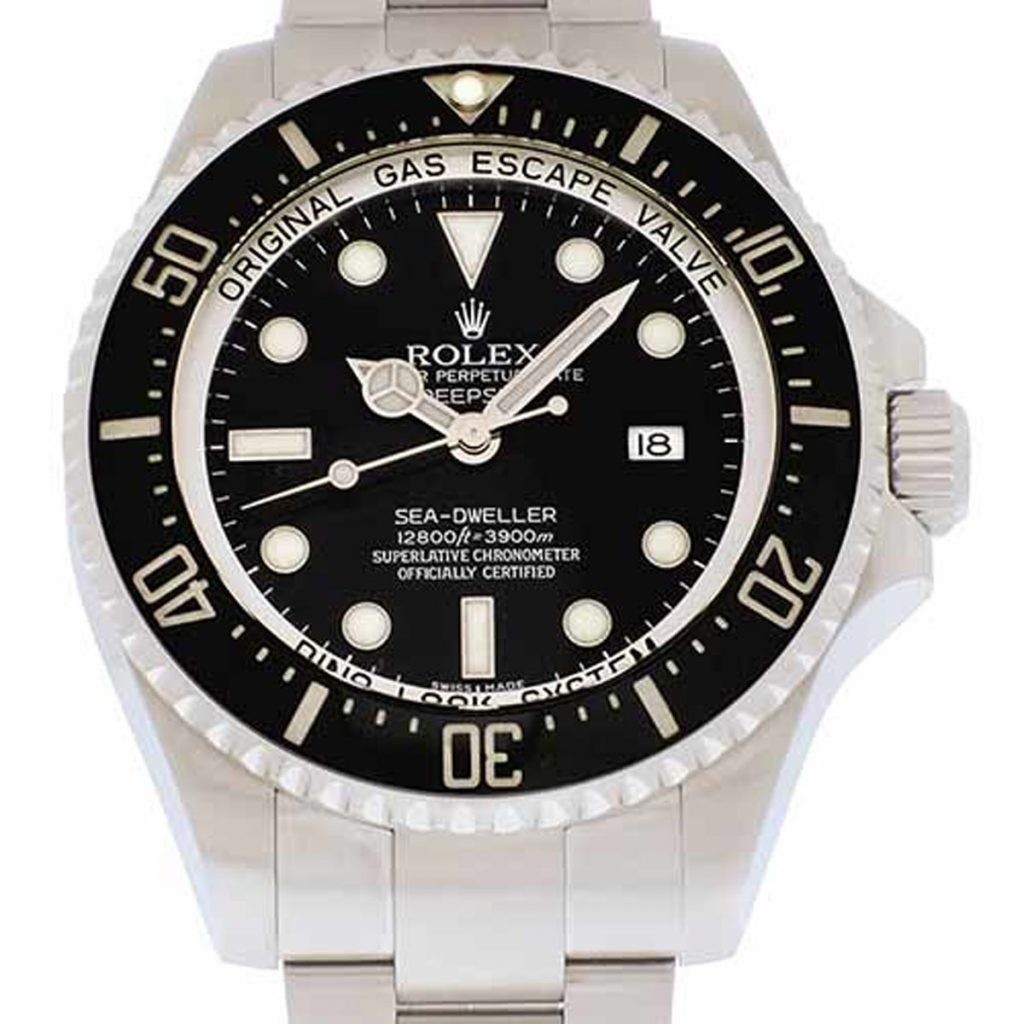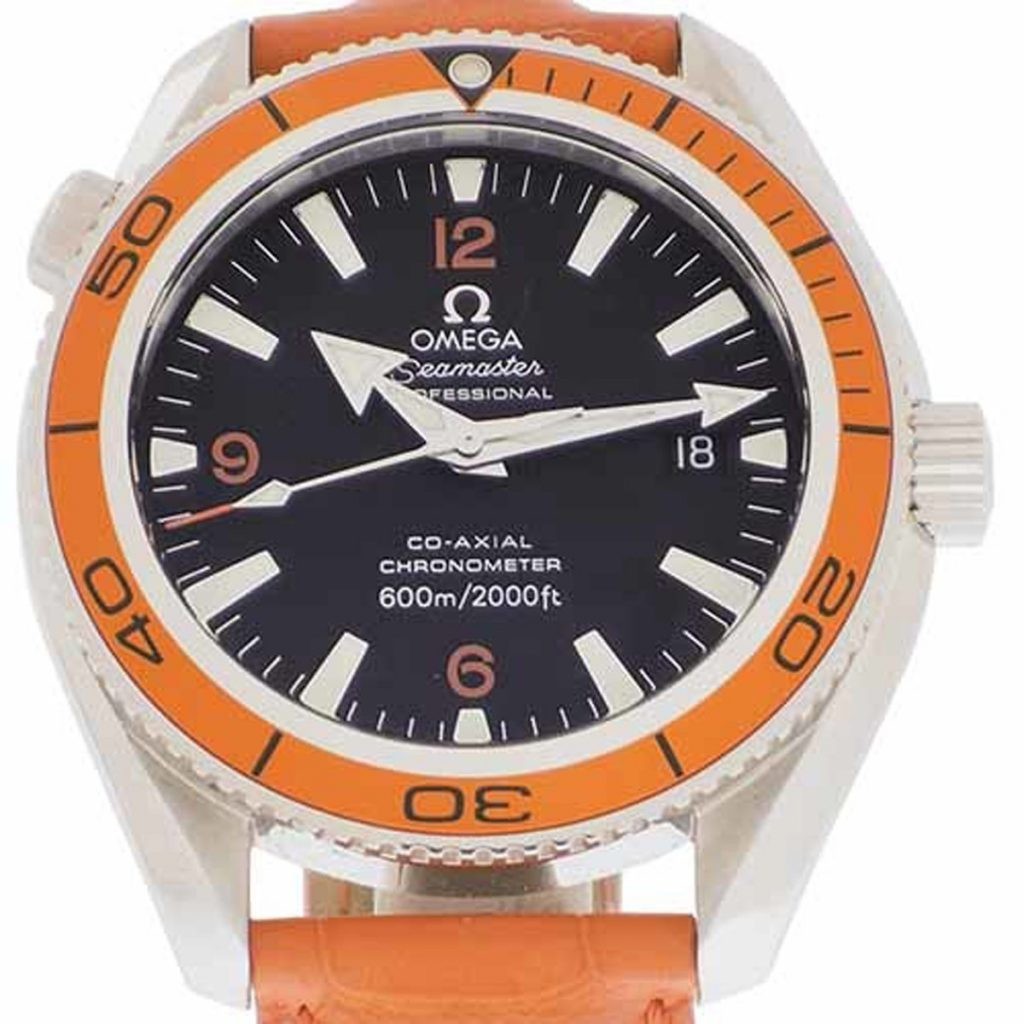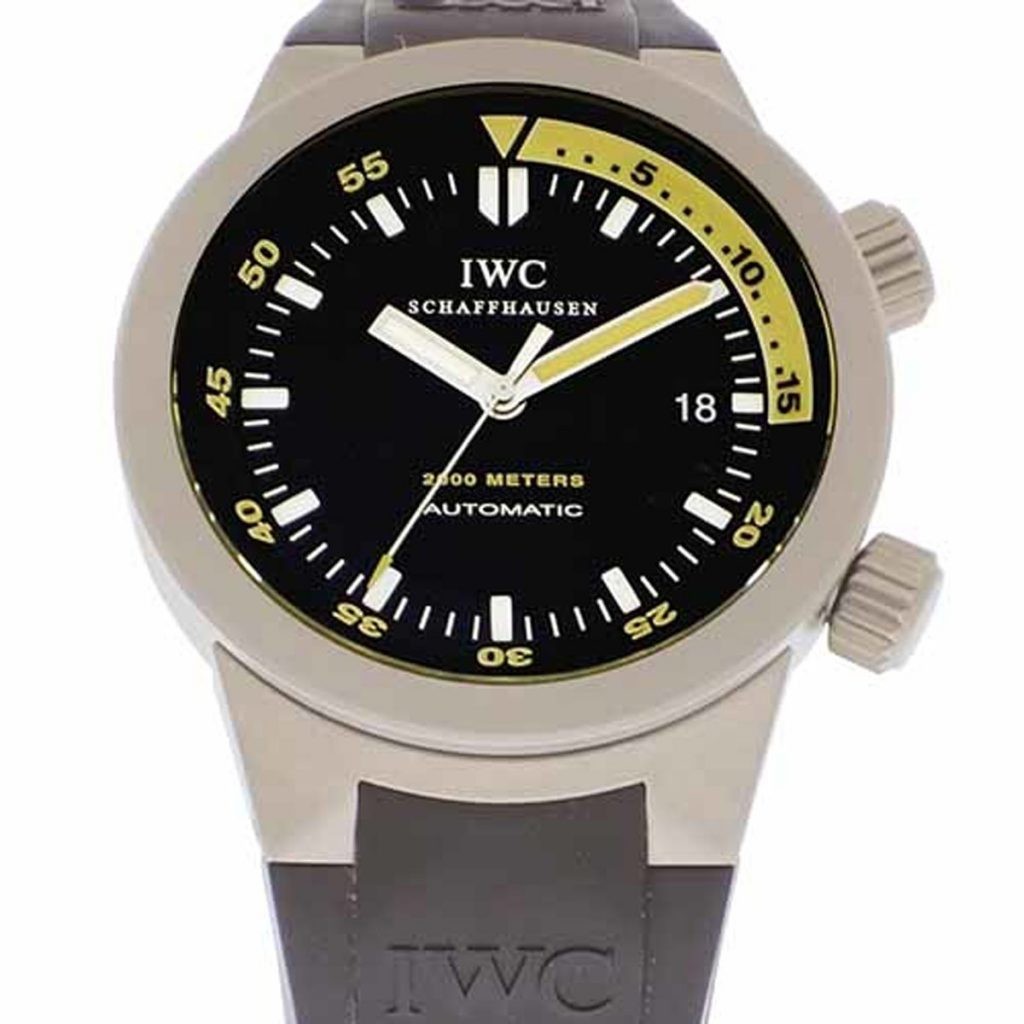What makes a diving watch a diving watch? While there are sporty watches that have a ‘diving’ look, a true diving watch is an instrument designed to time your underwater dive. Electronic dive computers have taken over and enhanced many of the functions that used to be solely the domain of the watch, but serious, safety-minded divers still like to have a reliable mechanical tool on hand. Of course, dive watches also have great style on deck or dry land. Here’s what you need to know about real diving watches:
What’s the difference between waterproof and water-resistant?
As of this writing, there’s no such thing as a completely waterproof watch. Water resistant means the watch can get wet and still function. Look for a well-fitted case, with a full seal or a back that is screwed in place. A gasket should seal the entry of the winding stem. A gasket is a simple rubber ring that forms a seal between the inner movement and the stem of the crown so that when the crown is pulled out for winding or setting the time, the gasket protects the watch from moisture. Of course, gaskets can age or dry out so it requires basic maintenance to make sure yours is in good order. We don’t need to tell you not to adjust the crown underwater, do we? Okay. Don’t.
Any diving watch that you’re planning to wear while swimming or diving should be tested yearly for water resistance.
Understanding depth rating. How low can your watch go?
Depth rating is an indication of a watch’s water resistance under pressure. As a diver goes deeper, the water pressure increases on the diver and on the watch.
What depth rating do you need for your activity?
The depth rating will be on the back and sometimes the face of the dial. The rating you need depends on what you’re doing in the water.
Depth Rating Guide for Watches by Activity
Activity |
Rating in Meters |
| Swimming | 100m |
| Snorkeling | 100m |
| Surfing | 200m |
| Diving | 200m |
| Shallow SCUBA | 200m |
| Low Dive SCUBA | 300M |
This amazing Rolex Sea-Dweller is Officially Certified to 12,800 feet. That’s about one-third the depth of Challenger Deep, the deepest part of the ocean. At 36,200 feet, the water there exerts a pressure of 1089 atms. Luckily, for divers, the average depth of the ocean is 12,100 feet so at a rating of 12,800 feet, this Rolex can take you most anywhere, with depth to spare. Why do some watches go to extremes that most divers will never need? Because they can, of course.
The functional parts of a diver watch
Okay, it’s time to talk function. Your watch needs to be a reliable tool, so look for these functional features:
It’s not a diver watch without a uni-directional rotating bezel
What’s a uni-directional rotating bezel and why do you need one? Because underwater, timing is everything. A tank of oxygen has a time limit and your life depends on knowing how much time/oxygen is left in it. So there’s no way you want a bezel that could get accidently reset or wound backwards. Thus, uni-directional. On a dive watch, the bezel is set to 60 minutes with 5 minute markings. A ridged edge helps you grip without slipping. Here’s a stunning Omega Seamaster that’s a great example.
You need to be able to read a diver watch underwater
Diver watch design is all about visibility. That means luminosity first: you can’t adjust lighting conditions under water and light disappears quickly as depth increases. Divers carry flashlights, but you might need your hands for something other than shining a light on your watch dial. So the markings on the bezel and the dial need to be both luminous and distinct. Subtlety is not the goal.
The next factor in diver watch visibility is legibility. Here the watchword is simplicity. Beware of falling prey to tech-itis – the tendency to assume more functionality is better and a watch with a depth gauge and other indicators will be more useful. But keep in mind that underwater you can’t afford confusion. ISO requires clear readability at 10 inches. (Read more about ISO, here.) At a glance, you should be able to distinguish the hour and minute hand, see the lapsed time on the bezel, and have proof the watch is running. Those three things will keep you alive. Anything else is a distraction.
We love this IWC with its extra-luminous “15 minute warning.”
How is the crown designed?
A key functional design feature on a diver watch is a screw-down crown. It should screw down tightly for a secure seal.
Pick your diver strap as carefully as you do the diver watch
Leave the leather for your dress watch. Stainless steel can handle knocks and shocks and won’t stretch under water. Rubber or fabric straps are a popular choice and can be extra long for strapping a watch onto your thigh, which some divers prefer. Some can be tightened if they loosen underwater.
Last but not least, read your dive watch manual
Forty feet underwater is not the time to wonder what ‘that’ button does. You need to know your watch like you know the rest of your diving equipment. Read the manual, practice setting it, go in a dark room and make sure you can read the dials and bezel. Work with it until you’re running on instinct.
Ready to enjoy the water? Now you know how to pick a diver watch that will hold up during your greatest adventures.


TESTIMONIAL
“My experience buying a pre-owned Rolex from Palisade Jewelers was perfect. I did the transaction by phone. The watch arrived, exactly as described; they gave me good, attentive service.”
- Richard
CALL OR COME
SEE US
Visit our store for a personal consultation with our watch and jewelry experts.






